Even when you aren’t looking for it.
The first couple of photos are of a neat lamp at a restaurant that I went to recently. It is made out of sixty identical pieces that form a pentagonal hexecontahedral shape. The other two pieces are examples of large outdoor sculptures at MIT.

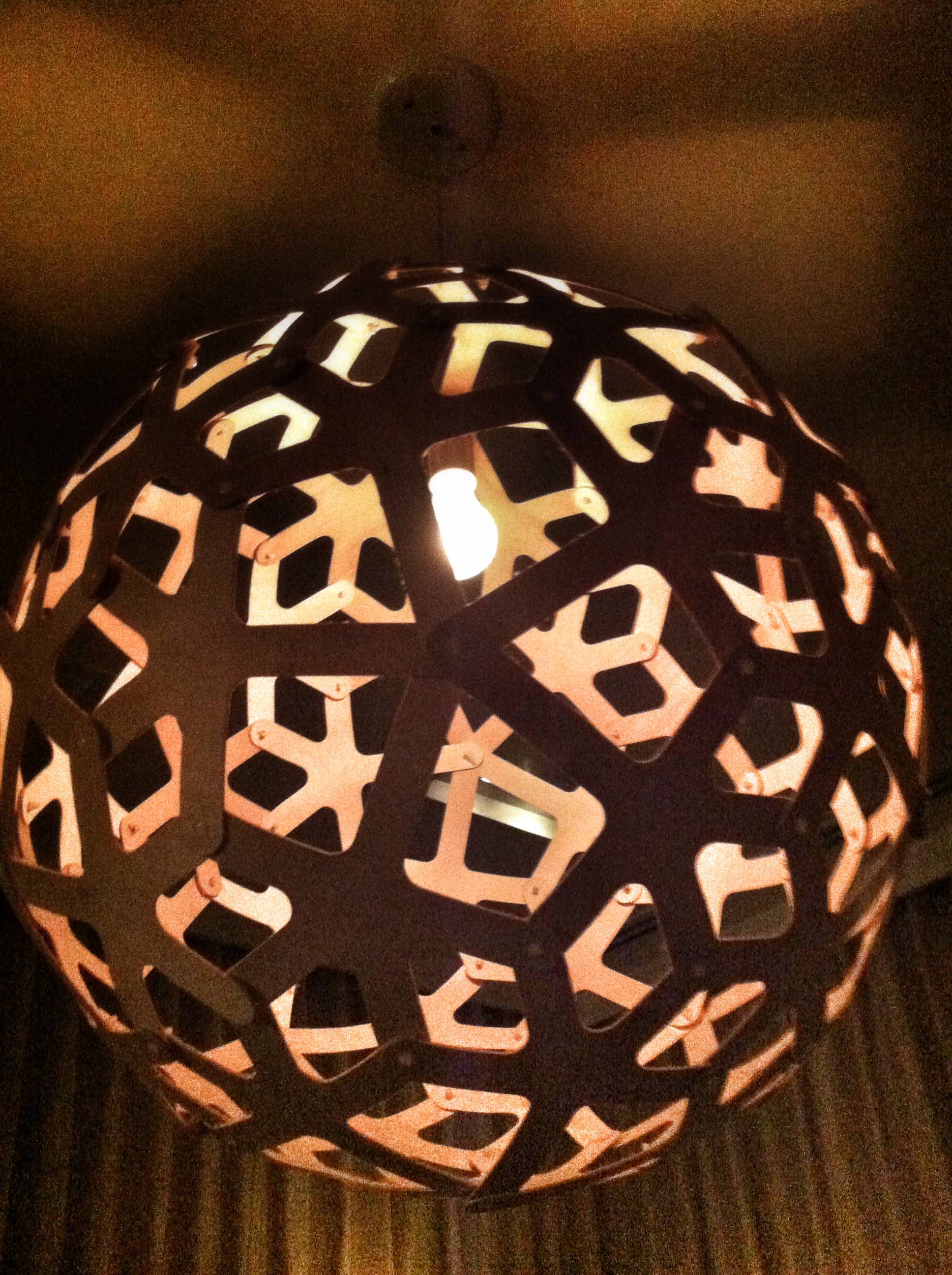
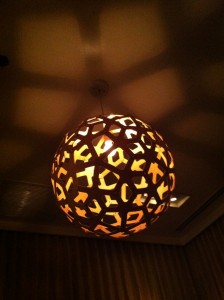

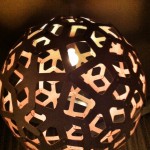
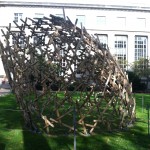

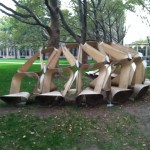



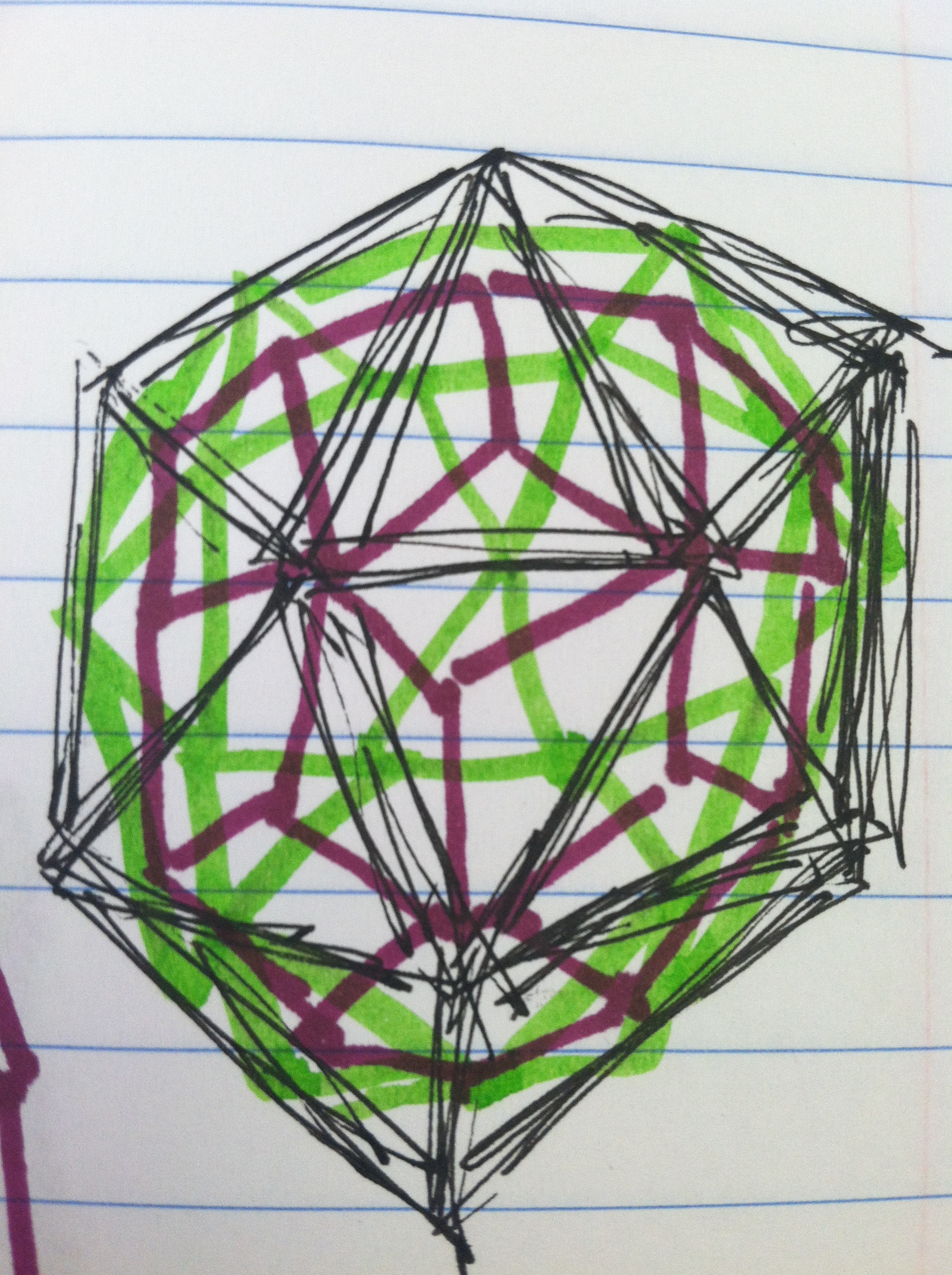
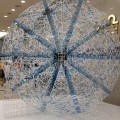

This is not actually a pentagonal hexeacontahedron, but is in fact the “Twarock tiling”, found on certain viruses! I wonder if the person who made it knew – probably not, and either way how absolutely marvellous!
Here’s the original paper Reidun Twarock describing the Twarock tiling, though of course she’s too humble to call it that! http://www.ncbi.nlm.nih.gov/pubmed/14759653 It appears on polyomaviridae and papillomaviridae, which cause cancer in humans and other mammals.
Interesting. I think it’s inaccurate to describe it as not having some relation to the pentagonal hexecontahedron, having seen the piece in question first-hand, I know that it is made out of 60 flat pieces, each of which is essentially irregular starfish shaped such that the points of each piece are aligned with the locations of the vertices of each face of a pentagonal hexecontahedron. I realize that that’s not very well explained in my post, though. 🙂
If instead of looking at each piece of the figure as representing a subsection of a face, and instead thinking of each “line” as an edge, you do end up with something that is more like the “Twarock tiling” and certainly much easier to see in that figure. On the other hand, the shape and number of the actual units involved make me suspect that the designer was thinking of it as it relates to the pentagonal hexecontahedron as well.
Regardless, all icosahedral things are rather related to each other, and it’s neat to see another way icosahedral symmetry shows up in the wild, I had never heard of the Twarock tiling before!
Yes you’re right of course, it does have a relation to the pentagonal hexecontahedron, and it’s certainly much more likely that the designer had that in mind, rather than this very obscure virus-related shape.
What’s rather cool about the Twarock tiling, by the way, is that it is connected to the “Penrose tiling”, it can be generated from a lattice of 6-orthoplexes, and Reidun Twarock is a female mathematician 🙂
🙂 Can’t argue with those points for the Twarock Tiling.
I have found the website for the lamp on this page. It is a design by Davdi Trubridge. http://www.davidtrubridge.com/Designs/lighting/kitsets/coral/